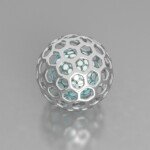Forged in Precision: The Silent Architect of Our Technological Age
Beyond the clatter of industry and the hum of progress, a quieter, more fundamental revolution unfolds. It operates in temperature-controlled rooms filled with the rhythmic cadence of cutting tools meeting metal, plastic, or ceramic. It transforms abstract digital blueprints into tangible, complex, and astoundingly precise components. This is the world of CNC (Computer Numerical Control) machine tools and processes – the unassuming, yet indispensable, bedrock upon which modern manufacturing, innovation, and technological advancement are built.
Precision isn’t merely desirable in today’s world; it is non-negotiable. It is the language spoken by jet turbine blades slicing the atmosphere at hypersonic speeds. It’s the unspoken contract in the seamless articulation of a robotic arm performing delicate surgery. It’s the hidden geometry ensuring the flawless function of your smartphone’s gyroscope or the efficient silence of a hybrid vehicle’s electric motor. This relentless demand for dimensional perfection, complex geometries, and repeatability on a microscopic scale has found its champion in CNC technology.
The Anatomy of Unwavering Accuracy: How CNC Crafts Perfection
At its core, a CNC machine is a symphony of engineering disciplines orchestrated by digital intelligence. Achieving micron-level (and often sub-micron) precision involves a complex interplay of factors:
- The Command Center: It all begins with the Computer Numerical Control Unit. This sophisticated brain interprets G-code (or CAD/CAM-derived toolpaths) with mathematical rigor. Every movement command – direction, velocity, acceleration, position – is calculated down to mind-bogglingly small increments.
- Motion Nirvana: The heart of precision lies in the Drive System. High-torque, brushless servo motors receive signals from the controller. Critically, these motors are coupled with incredibly precise feedback devices – encoders or resolvers – monitoring shaft position hundreds, even thousands of times per second. Any discrepancy between commanded and actual position is instantly corrected. Think quantum-level adjustments happening continuously. Tightly coupled within this system are precision-ground ball screws or advanced linear motors, translating rotary motion into linear movement with minimal friction and almost zero backlash. This minimizes any "slop" that could translate into dimensional error.
- Structural Integrity: Machining forces are immense. Therefore, the Machine Frame (typically cast iron or polymer concrete) must exhibit overwhelming rigidity and exceptional damping characteristics. Vibrations are the enemy of precision; the machine tool itself must be a bastion of stability, absorbing and dissipating energy rather than amplifying it. Advanced designs use finite element analysis (FEA) to optimize structure long before the first casting is poured.
- Thermal Equilibrium: Metal expands with heat. The friction of cutting, environmental changes, and even motor heat can induce thermal growth that throws dimensions wildly off-course. Sophisticated CNC systems employ active thermal compensation. Sensors strategically placed monitor temperature gradients across the machine structure (spindle, ball screws, base). The controller dynamically adjusts axis positions in real-time, compensating for predicted thermal drift, ensuring stability hour after hour.
- Tool Integrity & Compensation: The cutting Tool itself, its holder, and the Spindle are critical links. Tool Presetting – precisely measuring the geometry and wear of tools offline – feeds vital offset data into the CNC. Automatic Tool Changers (ATCs) swap tools with impeccable positional repeatability (often measured in microns). During machining, Tool Length Compensation (TLC) and Tool Radius Compensation (TRC) dynamically account for variations in tool geometry or minor wear, ensuring the cutting edge follows the programmed path flawlessly. High-speed spindles achieve staggering rotational accuracy (runout measured in tenths or hundredths of micrometers).
- Ultra-Precise Metrology: Perfection is meaningless without verification. While Coordinate Measuring Machines (CMMs) play a crucial role offline, on-machine probing has revolutionized integration. Touch-trigger probes mounted in the spindle or laser scanners can automatically measure workpiece features during the process. This allows real-time validation, adaptive machining corrections, and automated part setup verification, creating a closed-loop quality system within the machining envelope itself.
The Evolution: From Camshafts to Cosmic Aspirations
The journey of CNC encompasses a relentless pursuit of higher precision, speed, and complexity:
- The Genesis: Early NC machines relied on physical punched tapes, severely limited in complexity and consistency. The advent of minicomputers and microprocessors transitioned to CNC, unlocking true programmable flexibility.
- Moving Beyond 3: Multi-Axis Machining (4-axis, 5-axis, even 9-axis and beyond) was the game-changer. By simultaneously positioning a part under the tool along multiple rotational and linear axes, it enabled the machining of complex contours once impossible without extensive handwork. Imagine machining an impeller blade or a prosthetic hip socket from a solid block in a single setup.
- Speed Meets Precision: High-Speed Machining (HSM) emerged, leveraging advanced toolpath strategies (like trochoidal milling and constant engagement), high-rpm spindles, and rapid traverse rates. This doesn’t sacrifice precision; it demands even more control to handle high accelerations and cutting forces dynamically without introducing vibration or deflection.
- Material Mastery: CNC conquered not just metals (aluminum to Inconel), but also advanced ceramics, cutting-edge composites, and ultra-hard tooling materials, demanding specialized cutting strategies, tooling, and machine rigidity.
- The Micron as Frontier: Micromachining and Ultra-Precision Machining (UPM) scales down this precision to the sub-micron level. Think optical lenses, microfluidic devices, and components demanding mirror-like surface finishes. These machines operate in controlled environments, often utilizing specialized processes like diamond turning and focused on minimizing even ambient noise and vibration.
- Automation Integration: CNC machine tools are the workhorse engines within the larger framework of manufacturing automation. They readily integrate into Flexible Manufacturing Systems (FMS) and cater to Just-in-Time (JIT) production environments, achieving consistent precision around the clock.
Precision Unlocked: The Foundation of Advancement
What does this relentless pursuit of CNC precision truly enable? It’s the silent enabler of the modern world:
- Aerospace & Defense: Manufacturing turbine blades with aerodynamics measured in microns, complex landing gear components where structural integrity is paramount, and guidance systems requiring absolute dimensional and geometric fidelity. Lives depend on CNC precision.
- Medical & Life Sciences: From intricate titanium screws fusing vertebrae to perfectly smoothed knee/hip implants articulating flawlessly for decades, to microfluidic chips analyzing single cells. Advanced diagnostics and life-improving therapies hinge on biocompatible components machined with sub-micron accuracy.
- Automotive: High-performance engines demand piston/cylinder tolerances within fractions of a human hair. The shift to Electric Vehicles (EVs) relies on high-precision copper machining for stators/rotors and intricate thermal management components. Modern safety systems (ABS, ADAS sensors) rely on complex, reliable parts.
- Electronics: Think beyond the phone case. CNC mills the precise molds that shape intricate plastic and metal housings, drills the micro-vias connecting layers of circuit boards, and machines the heatsinks keeping semiconductors cool. The entire miniaturization trend in silicon depends on the precision of the tools building the infrastructure.
- Energy: Whether crafting complex paths inside fuel injectors for efficient combustion, producing durable blades for wind turbines, or machining critical components for nuclear fusion research reactors, precision translates directly into efficiency, safety, and sustainability.
Shaping the Future: Where Precision Meets Intelligence
The CNC landscape is perpetually evolving. The future is bright, driven by converging technologies:
- AI & Machine Learning (ML): Predictive maintenance forecasting tool wear or machine component failure. Intelligent process optimization automatically adjusting feeds/speeds for optimal results and tool life based on sensor feedback and historical data. Adaptive machining compensating for material inconsistencies on-the-fly.
- Increased Integration of Additive: Hybrid Manufacturing systems combining high-precision CNC machining with additive capabilities (DED, Wire-Arc) allow for complex geometries built additively and finished subtractively to tight tolerances within a single machine platform. "Additive for shape, subtractive for precision" becomes a reality.
- Digital Twins & Simulation: Sophisticated physics-based simulations virtually test machining processes, optimizing toolpaths, predicting forces/stresses, and eliminating potential errors before metal is ever cut, slashing setup times and scrap rates.
- IoT & Connected Factories: CNC machines become data nodes in the Industrial Internet of Things (IIoT). Real-time process monitoring and centralized analysis feed back into continuous improvement loops, optimizing efficiency and quality across the entire production floor.
- New Frontiers in Measurement & Control: Non-contact, high-speed in-process metrology (optical, laser, X-ray), even smarter thermal compensation strategies, and the continuous push towards achieving nanometer-level control in specialized UPM applications.
Conclusion: The Imperative of Precision
In an era obsessed with disruption, it’s easy to overlook the fundamental technologies that make disruption possible. CNC machine tools, perfected over decades through relentless engineering innovation, are the silent, almost invisible, giants upon which our technological civilization rests. They translate the language of digital design into the physical reality of high-performance, reliable, and transformative products. Precision is not simply a metric for CNC; it is the very essence. It is the guarantee of performance, the foundation of safety, the driver of innovation, and the critical link between human ingenuity and manufactured reality. As we push the boundaries of science, medicine, exploration, and sustainability, the quiet hum of advanced CNC machinery, orchestrating movements measured in microns, will continue to be the unsung symphony forging the future, one immaculately precise part at a time. The pursuit of perfection, it seems, truly begins at the point of cutting contact.










































